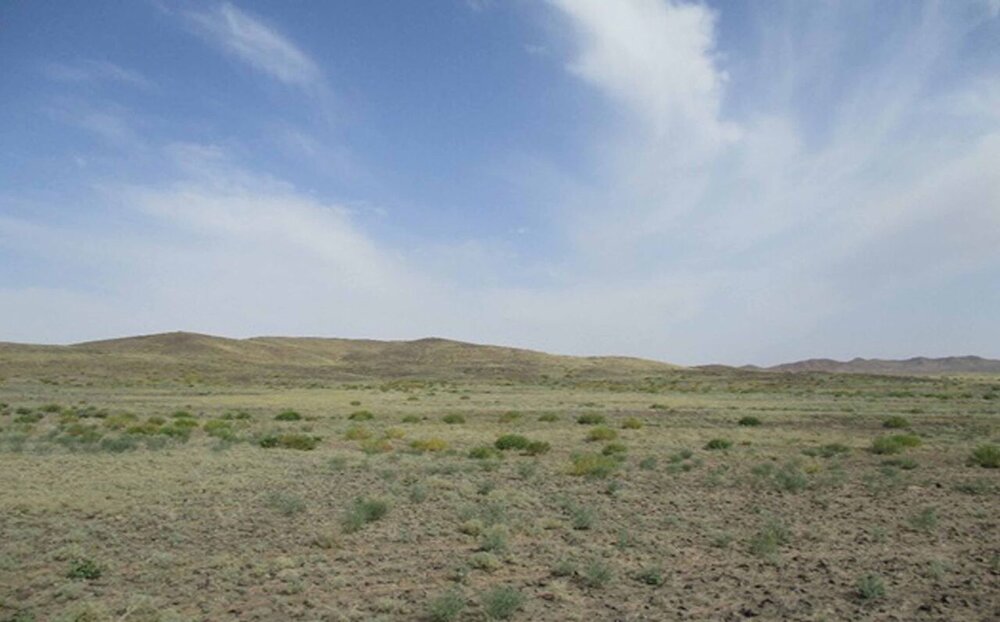Over 30 Paleolithic sites discovered in eastern Iran

TEHRAN – More than 30 Paleolithic-era sites have been discovered during a recent archaeological survey in Ferdows county, eastern South Khorasan province.
The Paleolithic, also called the Old Stone Age, is a period in human prehistory distinguished by the original development of stone tools that covers c. 99% of human technological prehistory. It extends from the earliest known use of stone tools by hominins c. 3.3 million years ago, to the end of the Pleistocene c. 11,650 cal BP.
“The east of the Iranian plateau is one of the most unknown regions of Iran when it comes to the Pleistocene epoch. Its ambiguity is to some extent that it is difficult to find an area used to be home to a (human) settlement of that period…. The (recent) archeological study, however, is of high significance as it has determined more than 30 Paleolithic sites in Ferdows county,” IRNA quoted Ali Sadraei, the head of the archeological survey, as saying on Monday.
Previous studies in the region suggest that during the Paleolithic period, eastern Iran was located between two possible late Pleistocene corridors of human dispersal into East Asia: one through the Sistan region and the other along the northern edge of the Iranian Central Desert (Dasht-e Kavir). Despite this potentially important geographical location, the unfavorable environmental conditions and the lack of permanent water sources have meant that archaeologists have paid little attention to this area.
Talking about earlier Paleolithic studies held in the region, Sadraei explained: “The history of Paleolithic studies in this region dates back to more than 7 decades ago, but following that time, few ones have been conducted in this area mostly in the shape of case studies that are not very helpful in analyzing complex issues in the Paleolithic times.”
In contrast, over the past decade, a series of extensive research has been conducted on Paleolithic settlements in the central Plateau of Iran and near the Zagros Mountain range, resulting in reliable and significant discoveries, he said.
“However, this atmosphere is completely different from that in the east and northeast of Iran. Possibly, eastern of the Iranian Plateau was free of human life in the Paleolithic Age…..while the geographical location and climatic diversity in [parts of] this area could be providing significant potential for attracting hunter-gatherer groups, some of whom being identified in [our recent] studies in Ferdows county.”
The archaeologist added that fresh the survey was conducted despite the unbearable heat through a completely surveyed manner, fruit of which was the identification of more than 30 sites dating back the Paleolithic period.
“The newly-conducted survey can be regarded as a cornerstone to the ongoing systematic studies hoped to deepen our knowledge of the Paleolithic era in this part of the Iranian plateau.”
Last year, in one of the significant archaeological findings of Iranian history, Kaldar cave in western Iran yielded fresh evidence for its Paleolithic residents; including traditions of making [stone] tools related to Middle Paleolithic and Upper Paleolithic eras. Archaeologists excavated stone tools and a fragment of a fossilized skull, attributed to Homo sapiens. The cave has also yielded weapon fragments crafted by Neanderthals.
The onset of the Paleolithic Period, according to Encyclopedia Britannica, has traditionally coincided with the first evidence of tool construction and use by Homo some 2.58 million years ago, near the beginning of the Pleistocene Epoch (2.58 million to 11,700 years ago). In 2015, however, researchers excavating a dry riverbed near Kenya’s Lake Turkana discovered primitive stone tools embedded in rocks dating to 3.3 million years ago—the middle of the Pliocene Epoch (some 5.3 million to 2.58 million years ago). Those tools predate the oldest confirmed specimens of Homo by almost 1 million years, which raises the possibility that toolmaking originated with Australopithecus or its contemporaries and that the timing of the onset of this cultural stage should be reevaluated.
AFM/MG
